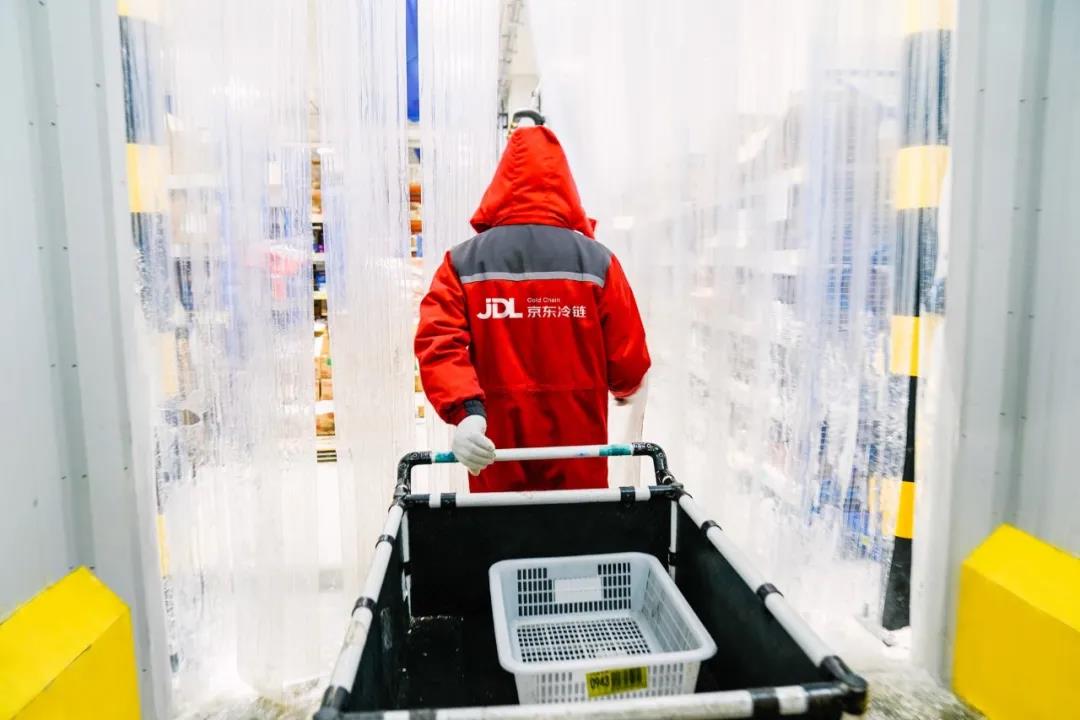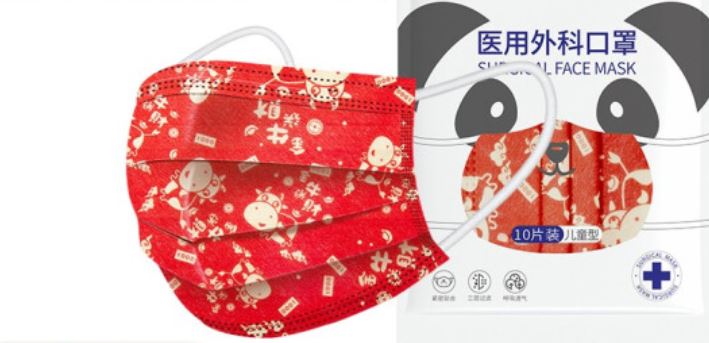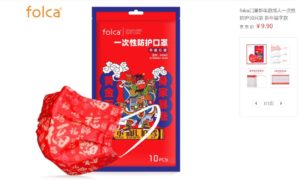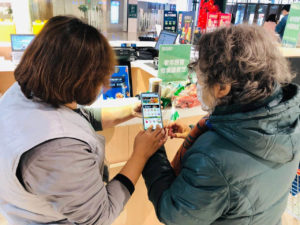by Ling Cao
The epidemic has changed the consumption habits of consumers in China and worldwide, with online sales for fresh produce and other foods increasing during the pandemic when many offline stores were closed, and later continuing even as conditions stabilized.
“Our online sales are up dramatically. We’d been actively promoting our online sales for a couple of years and it really took off with the pandemic,” said Bill Dewey, head of public relations of Taylor Shellfish, one of the largest producers of farmed shellfish in the US in an interview with SeafoodSource. In December 2020, online sales for the company hit US $580,000, five times greater than sales in December 2019. According to the report, e-commerce has been a key component to Taylor’s resurgence.
In China, e-commerce players like JD have upheld social responsibility and increased online sales of fresh produce in a moment when more consumers are shopping online; and have also educated frozen food enterprises and restaurants who want to transition online.
JD shared four tips for them, related to the product supply chain, sales model, e-commerce team and logistics cooperation. Additionally, during the COVID-19 outbreak period, JD also launched a “catering retail alliance” to help catering merchants expand their online businesses.
Strict food safety control
Even though online sales are a trend, selling during a pandemic isn’t an easy task. JD takes food safety as a high priority. It undergoes a strict disinfection process and nucleic acid testing of fresh produce during the whole fulfillment process. For imported food, JD requires merchants or supplies to provide the inspection and quarantine certificate from Customs before stocking items in the warehouses. Once products have entered the warehouses, JD will undergo an additional three rounds of disinfection and regular nucleic acid sample testing. For the last mile delivery, couriers will spray disinfectant on their vehicles and the package surfaces before finally depositing the packages on customers’ doorsteps by JD’s nationwide cold chain network, which now operates 50 warehouses that enable fulfillment in 300 cities.

Ye Kan, sales manager of meat products at JD Fresh shared, “On the one hand, we will continuously maintain a strict safety control process. On the other hand, we need to take further steps to resolve customers’ concerns. For example, we are continuing to update the nuclear acid testing reports and other related food safety certificates regularly and have made them easily accessible on the product description page.”
Tailored for those in need
While maintaining food safety is a baseline, the company also needs to sell the products that meet customers’ needs. Based on big data, JD understands customers’ pain points and then works with enterprises to develop products that match demand more precisely. Kan shared that they will regularly look at customer comments, popular key word searches and more.
For example, JD Fresh has designed a steak product specifically for JD’s PLUS members, with premium beef collections and packages. The product is very popular among PLUS members, with a 97% satisfaction rate. Kan and his team sourced another high-end steak based on customers’ enquiries seeking high-end steak from Australia.

Besides meat, the seafood sales team at JD Fresh are also trying to find new paths. “Under the COVID-19 situation, we saw ready-to-cook products are popular, which can soften customers’ concerns for buying fresh seafood, as well as release them from complex cooking processes. Going forward, this could be a new trend,” shared Yu Feng, sales manager of seafood at JD Fresh.
At JD Fresh, a range of seafood-related ready-to-cook products are popular, including scallop with vermicelli, fish with fermented vegetables and spicy crayfish. Local ready-to-cook specialties also saw a quick increase, such as fermented fish from An’hui and Buddha Jumps Over the Wall (Fotiaoqiang) from Fujian. Among them, Buddha-Jumps-Over-the-Wall witnessed significant sales growth during the 2020 Single’s Day Grand Promotion on JD as sales of the dish increased by over 4 times within only 5 minutes during the shopping event.
Win-win success
JD has also worked as a bridge to gather industry partners to achieve win-win success. Last November, JD Fresh formed an industrial alliance for aquatic products with over two hundred enterprises across the industry chain, covering brands, e-commerce players, and supply chain providers. The alliance aims to integrate resources to find more new opportunities within the industry, building a safer and more standard aquatic products ecosystem for customers.
Marine Stewardship Council (MSC) is a member within the alliance. Xianglong Meng, its senior business manager of China programs said, “As the international standard institution representative, MSC will help promote sustainable fishing, and support JD Fresh’s supply chain building in sharing resources and applications.”
Like seafood, the fruit team also took great importance on partnering with industry players. One example are Chilean cherries. In December 2020, JD Fresh launched a premium alliance with cherry merchants who have opened third party stores on JD, aiming to source top quality cherries from Chile by leveraging JD’s high quality resources in supply chain, logistics and talent for first party fruits.
Xiaozhou Zhou, head of the fruits division at JD Fresh said, “We hope to empower our third party merchants with services, in order to provide a superior fruit shopping experience for customers.”
As one of the initiatives under the premium alliance with cherry merchants, JD also launched a C2M tailored cherry gift box decorated in red and featuring the zodiac ox, which aims to appeal to Chinese customers purchasing New Year’s gifts, while 2021 is the lunar year of ox. In addition, JD Fresh made a C2M gift box for PLUS members, tailored in volume, quality and package style by working with Chilean’s local farmers at the place of origin. The gift box is also a private label brand under JD, and is among the hot-selling products.

More ways to operate
Livestreaming was another avenue that enabled JD to promote fresh produce sales in 2020. Most recently, JD Fresh held a livestream to promote Chilean cherries, New Zealand kiwis, Philippine pineapples, Thai coconuts and more. Customers were active during the initiative, with one customer posting “like” 301 times, and several said they can’t wait to purchase fruits.

For another event in July, JD invited a series of entrepreneurs to join a livestream. Liang Zhang, general manager of e-commerce at the barbecue chain Hannashan joined JD’s livestream with the company’s executive chef. During the livestream, they taught customers how to cook delicious meat, driving up their sales of convenient barbecue meat products.
JD has been sourcing fruits directly from many countries, such as Chile, US, Australia, New Zealand, Egypt, Thailand and Canada. Yihong Wang, sales manager for imported fruits at JD Fresh said that the sales of the imported fruits still face challenges, such as not being able to go abroad for selecting products and communicating with suppliers in person. Wang shared, “Thanks to our long-time high quality suppliers and brands, with whom we have worked for several years, we could communicate and procure products smoothly via phone or email remotely when travel was suspended due to the pandemic.”
However, Wang and her team believe this isn’t enough. They also consistently think of new ways of operation. Leveraging JD’s supply chain capability, JD even worked with suppliers in Thailand to create its own coconut water brands and sold them to Chinese consumers, which were popular in markets.
Wang further explained why her team was able to operate smoothly under the COVID-19 situation. “We mainly work with major export suppliers overseas, which can ensure quality and stability. JD’s in-house logistics network and know-how for the Chinese market have gained reputation for overseas fruit merchants.” Wang added, “After working with JD, they don’t need to worry about the integrated service from warehousing to post-sales.”
Future outlook
The epidemic situation remains uncertain. As the nation’s major e-commerce player, JD has the responsibility to ensure the livelihood of many who depend on its deliveries. The company announced on Jan. 15 that it will increase its fresh produce inventory of daily necessities by 300% for residents of Beijing and Hebei. This comes as Hebei province recently saw a spike in COVID-19 cases.
No matter how things develop, the meat sales manager Ye Kan is optimistic about the future: “We should join hands together with industry partners and build up our own supply chain capability, as well as hold a responsible attitude to society.” Feng shared that local specialties across China hold great opportunity, and JD will consider how to cooperate in this field.
Feng from the seafood team thinks the industry is transforming to a more standard business model, in which the industrial alliance for aquatic products could play an important role.
While Wang from the fruit team eyes for purchasing more high-quality food worldwide in 2021, she shared, “During the epidemic, brands and merchants care more about online penetration, and this is a good opportunity for us to have a deeper cooperation with them, bringing more best-in-class fruits to Chinese customers.”
(ling.cao@jd.com)




















